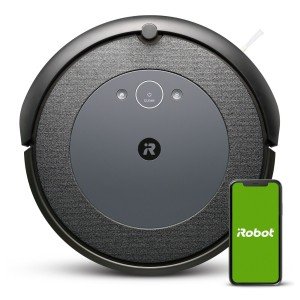Revolutionizing Home Maintenance: The Rise of Cleaning Robots
In an age where innovation continues to affect everyday life, cleaning robots have emerged as a substantial development in the field of domestic cleaning. These autonomously functioning devices have actually redefined how homes handle cleaning jobs, supplying benefit and efficiency. With their capability to navigate spaces, avoid challenges, and operate on pre-set schedules, cleaning robots are becoming vital tools for homeowners looking to optimize both their time and their living environment.
The Evolution of Cleaning Robots
Cleaning robots have actually gone through an incredible change considering that their inception. What started as simple devices has advanced into sophisticated gadgets equipped with sophisticated functions. Below is a table highlighting some essential turning points in the development of cleaning robots.
| Year | Turning point | Description |
|---|---|---|
| 1996 | First Commercial Robot | The very first robotic vacuum, Electrolux's Trilobite, was introduced. |
| 2002 | Roomba Launch | iRobot released the Roomba, making robotic vacuum popular. |
| 2004 | Mapping Technology Introduced | iRobot introduced smarter navigation capabilities, enabling better cleaning paths. |
| 2012 | Smart device Integration | The introduction of mobile app control enabled users to manage robots from another location. |
| 2020 | Advanced Sensors & & AI | Robots started using AI for enhanced mapping and things acknowledgment. |
Kinds Of Cleaning Robots
As innovation has actually advanced, different kinds of cleaning robots have actually surfaced, each developed to deal with various cleaning needs. Some of these consist of:
Robotic Vacuums
- Developed to autonomously vacuum floors, they frequently include sensors to browse around spaces and go back to their charging stations.
Robotic Mops
- These robots are equipped with mopping functionality, using water or cleaning options to scrub floors.
Window Cleaning Robots
- Particularly engineered for window cleaning, these gadgets can climb vertical surface areas using suction or magnetic systems.
Pool Cleaning Robots
- Created for in-ground pools, these robots gather particles and even scrub the walls of the pool efficiently.
Multi-tasking Robots
- Some contemporary cleaning robots combine vacuuming and mopping capabilities, providing versatile cleaning options.
How Cleaning Robots Work
The core performance of cleaning robots is focused around their capability to browse homes autonomously while performing cleaning jobs. Here's a breakdown of the basic components that enable them to carry out effectively:
- Sensors: Most cleaning robots are geared up with sensors that assist them find barriers, slopes, and edges, preventing falls and collisions.
- Navigation Technology: Many robots utilize a mix of gyroscopes, accelerometers, and often electronic cameras or LIDAR for navigation. This enables them to map their environment and clean effectively without missing areas.
- Source of power: Most cleaning robots run on rechargeable batteries, with many efficient in returning to their charging docks when their power runs low.
- Cleaning Mechanisms: Whether through suction for vacuuming or turning brushes for mopping, cleaning robots include numerous systems customized for efficient dirt removal.
Advantages of Cleaning Robots
The incorporation of cleaning robots in homes presents numerous advantages:
- Time-Saving: Cleaning robots can operate on their own, enabling property owners to participate in other activities.
- Consistent Cleaning: With scheduled cleaning times, these robots guarantee consistent upkeep of the home.
- Hard-to-Reach Areas: Cleaning robots can access narrow areas and corners that traditional cleaning tools may battle with.
- Lowered Allergens: Regular cleaning assists lessen dust and allergens, contributing to a healthier living environment.
Limitations of Cleaning Robots
Despite their lots of advantages, cleaning robots likewise present specific constraints that users must think about:
- High Initial Cost: While the price of cleaning robots has actually reduced in time, some sophisticated models can be relatively costly.
- Irregular Performance: Not all robots carry out similarly; some may fight with particular surface areas or dirt types, leading to unacceptable results.
- Minimal Capacity: Many robotic vacuums have smaller sized dustbin capabilities, needing more frequent emptying than traditional vacuum cleaners.
FAQs about Cleaning Robots
Q: Are cleaning robots worth the investment?A: Cleaning robots can be
a beneficial investment for those looking for time-saving services. They can significantly ease the cleaning burden, specifically for busy families. Q: Can cleaning robots be programmed?A: Yes, lots of cleaning robots come with programmable schedules and modes, allowing users to set specific cleaning times and areas. automatic vacuum : How do I preserve my cleaning robot?A: Regular upkeep includes cleaning the brushes, emptying the dustbin, and periodically examining for software application updates. Q: Are cleaning robots efficient on all surfaces?A: Most robotic vacuums work on difficult floorings and low-pile carpets. Nevertheless, efficiency may
differ on thick carpets or particular kinds of carpets. automatic vacuum : Do cleaning robots work well under furniture?A: Cleaning robots are designed to fit under many furniture; nevertheless, the effectiveness can depend on the height of the furnishings.
Cleaning robots represent a breakthrough in the realm of
domestic chores, offering a blend of technology, benefit, and effectiveness. While they are not a total replacement for standard
cleaning methods, they significantly improve housekeeping capabilities. As advancements continue, future versions of these devices are expected to become a lot more intelligent, efficient, and easy to use, further incorporating into the smart homes of tomorrow. The contemporary property owner thus faces an exciting future where cleaning robots could take much of the drudgery out of home upkeep, enabling a cleaner home with minimal effort.

